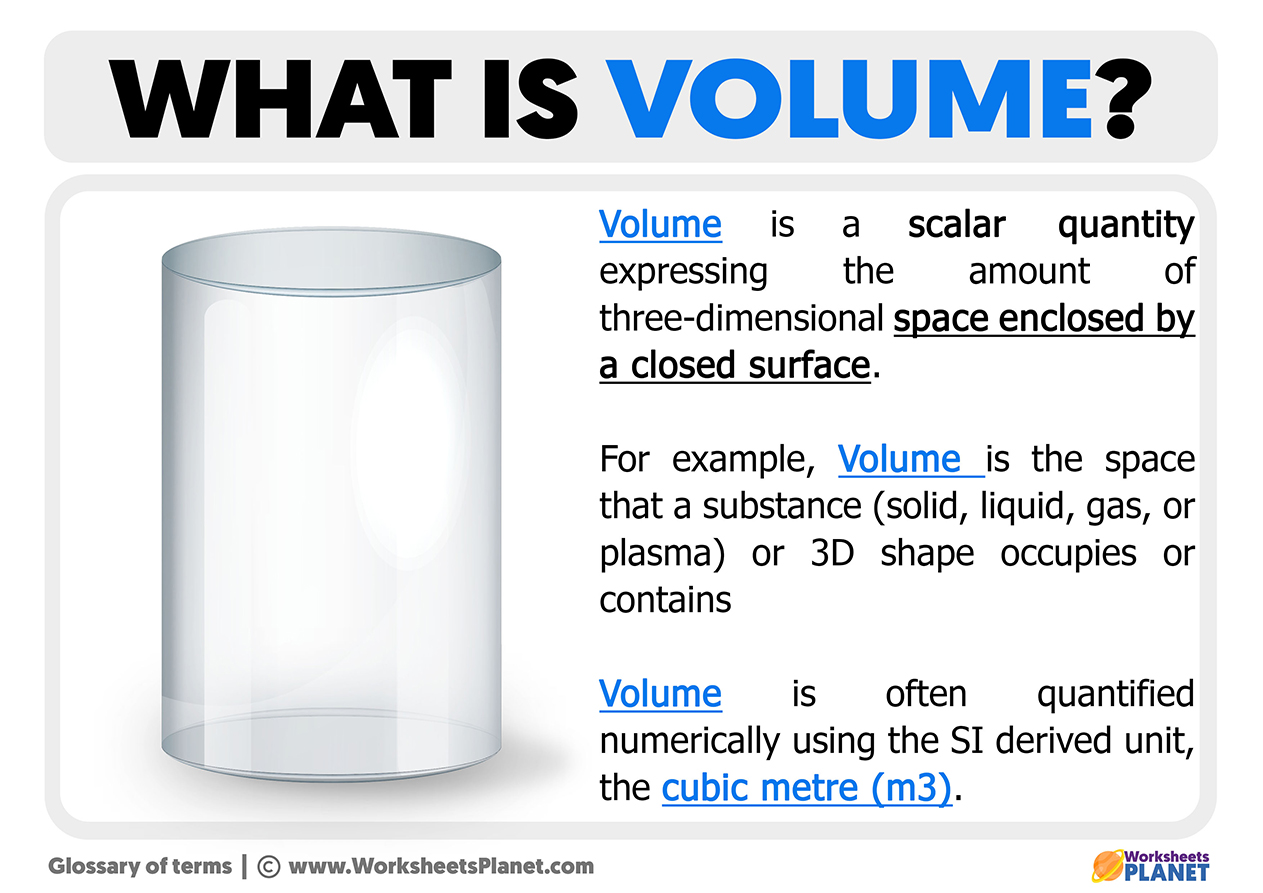The volume of a body is the numerical value that measures the amount of space it occupies. The volume is determined by height, width, and depth.
The concept of volume is so important since the world is three-dimensional, and all objects have width, height, and depth; therefore, they have volume. People use it frequently, for example, when estimating whether the piece of furniture they want to buy fits in their living room or whether they fit into a specific dress size.

In certain areas of science and engineering, such as when working with fluids, liquids or gases, the volume occupied acquires importance: when filling containers and pumping liquids such as water or in the design of a ship to make sure it doesn’t sink. All this makes it essential to determine it for many processes.
There are formulas to calculate the volume of geometric bodies of regular shapes, such as prisms, spheres, cylinders, and cones, based on some of their dimensions. And there are also ways to find out the volume of irregular objects, as will be described later.
Volume units
In the International System of SI Units, the unit for volume is the cubic meter or m3, while in the Anglo-Saxon system, it is the cubic foot or ft3 (from feet, which in English means “foot”).
There are many other units, according to the size of the space occupied. For example, cubic kilometers km3 for larger volumes or cubic millimeters mm3 for small volumes. There are also units for local use.
The capacity units are closely related to volume but are preferably used for liquids. The central unit of capacity is the liter, abbreviated L, which is equivalent to one dm3 (cubic decimeters).
The volume of a geometric body
When it comes to a geometric body such as those already mentioned, the volume is calculated through the appropriate formula, measuring the dimensions indicated by the formula.
For example, if you want to know the volume of a sphere, you need to measure its diameter and thereby know its radius, which is half. If it is a rectangular box, the box’s width, height, and depth are measured.
Then the requested values are inserted in the formula, taking care that all the units are the same, the required operations are carried out, and that’s it. You have the volume of the object.
The volume of an irregular body
Irregular solids do not have a geometric shape, like a stone or pebble. Even so, its volume can be found with the help of a graduated container filled with water by the liquid displacement method.
First, the volume occupied by the water is determined, and then the irregular object is completely submerged, measuring the new volume greater than the original. The volume of the irregular object is the difference between this volume and that of water alone.
For this method to work, the object must not be made of any substance that dissolves easily in water, it must remain completely submerged, and of course, there must be a graduated container sized to hold it completely.

